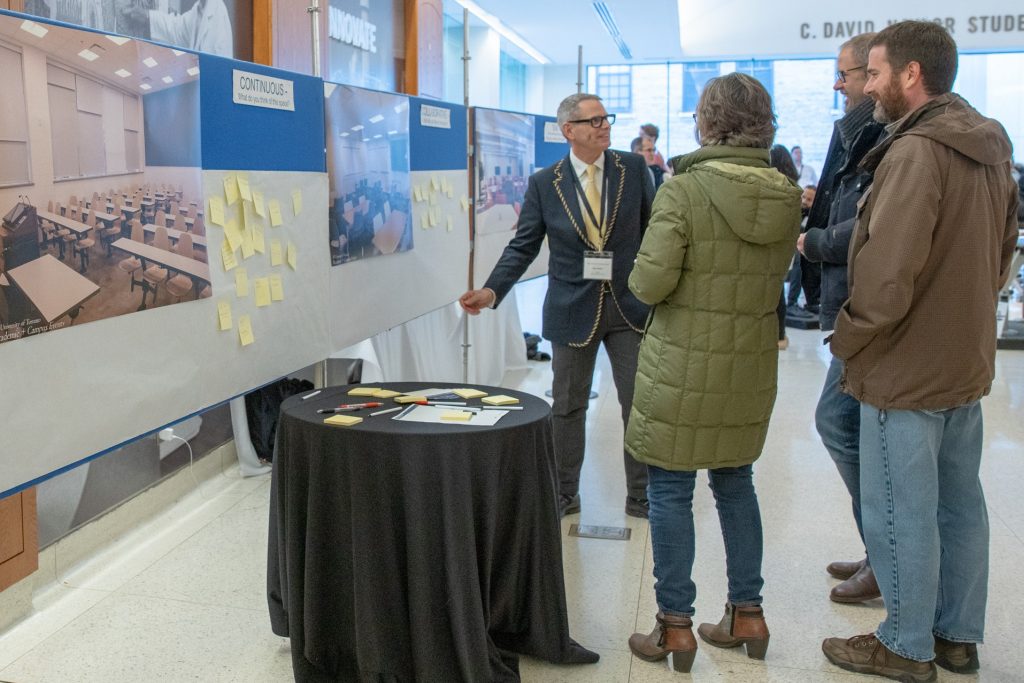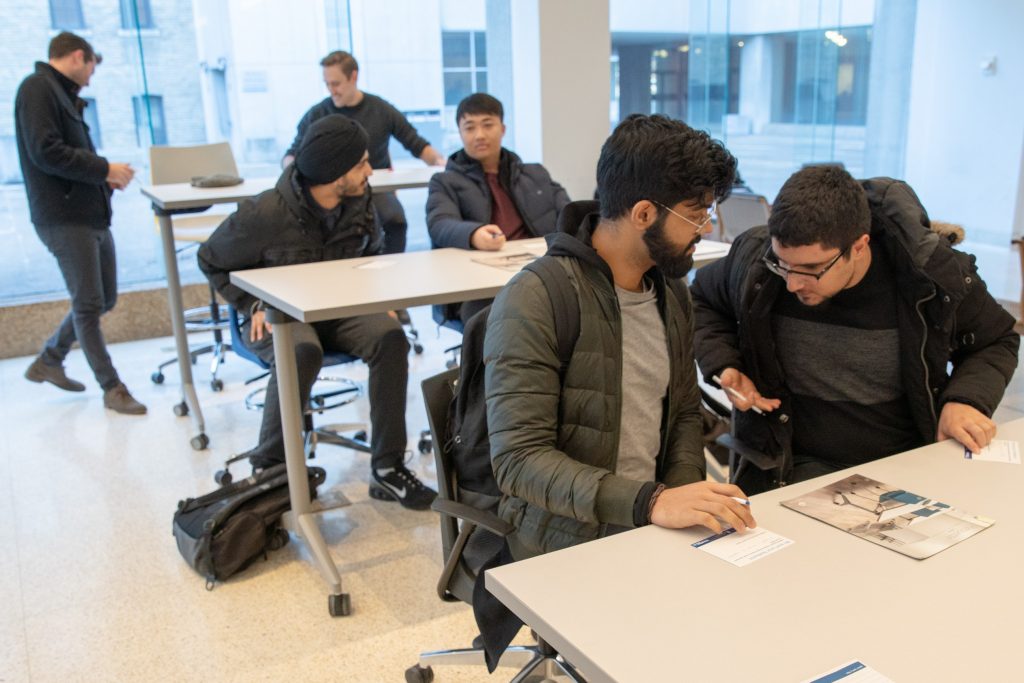By Kate Bowers, Senior Project Assistant & Nick Feinig, Senior Research Assistant
Many factors contribute to an ideal learning environment on campus, and the Transforming the Instructional Landscape (TIL) team lead by Academic and Campus Events (ACE) is working hard to understand deeply how student and faculty needs can be incorporated into classroom design. In fact, over the past two weeks, the TIL team has run a series of events to ask students and faculty, “what makes a classroom great?” From movable furniture to screen-sharing capabilities for students, newly created classrooms on campus enable a shift in both how students think about learning and how faculty think about teaching.
So far in the research process for the TIL project we have hit some impressive numbers. With 174 classrooms up for renovation. there is a tremendous opportunity to change the pedagogical landscape at U of T and transform not just the learning experience for students, but also the social experience of attending a large institution like U of T. With a move toward more collaborative work, group seating and active learning spaces, new classrooms on campus will provide opportunities for academic and student community development.
One such space that showcases a new classroom style is Lee & Margaret Lau Auditorium in the Myhal Centre for Engineering Innovation and Entrepreneurship. With 468 seats set in small groups, microphones for sharing ideas, and a 60-foot video wall, this feat of design and technology is an impressive new space that instructors are eager to try out for their large classes. Over 40 faculty, teaching support staff and AV specialists came out on November 27th to our event Myhal 150: Bring Us Your Vision, Make It a Reality. Keen to learn about the new technological capabilities of this room, and to provide feedback on teaching experience thus far, many faculty shared their teaching visions with the TIL team.
One such vision includes combined lecture/tutorial sections. Lectures could be interspersed with activities completed at each desk cluster and monitored by the instructor from the teaching station. Another emphasized resource sharing: students can actively contribute quotation, articles, and video clips mid lecture, which the instructor can seamlessly integrate into the flow of the class. These examples illustrate the collaborative nature of Myhal 150. Thanks to advances in technology and a greater understanding of the relationship between classroom space and pedagogy, university classes are no longer limited to the unidirectional flow of information from instructor to student.
In addition to faculty engagement in our research, the recent furniture events hosted by ACE brought us feedback from over 700 students on the furniture they prefer, their favourite classrooms on campus, and challenges they encounter in classes both large and small. Themes from these conversations highlighted student needs for accessible seating and ample storage space for belongings, among many others.
The next big phase of the TIL project is to engage in data analysis to uncover the core needs of classrooms users such that we can find innovative ways to bring it all together into classroom re-design. We are still collecting data and encourage any students or faculty who wish to share their experiences on campus to reach out to the TIL team at classroom.ace@utoronto.ca.




0 comments on “Great Classrooms on Campus: Listening to Students and Faculty”